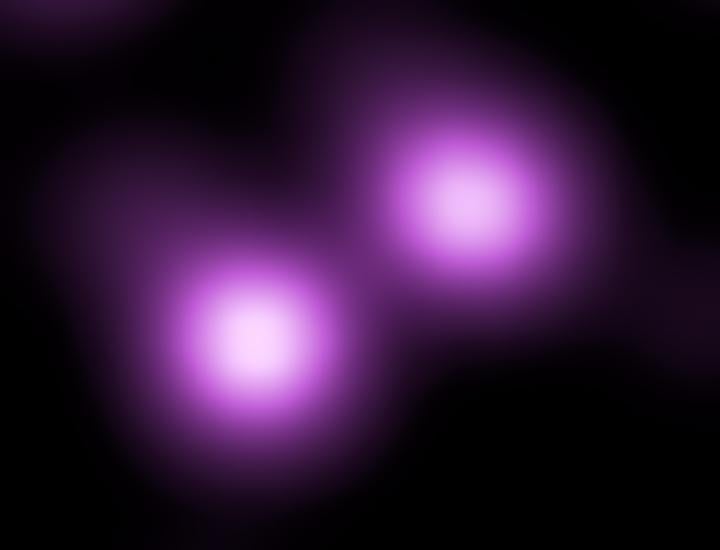Farthest supernova yet marked death of very massive star

Astronomers are reaching ever further back in time, seeking events from the earliest days of the universe. Now, the discovery of the farthest (and thus oldest) supernova ever seen is raising hopes that astronomers will soon detect the explosive deaths of the first stars to form after the universe's birth.
These stars forged the first heavy elements, which helped create smaller and longer-lived stars like our own sun.
The earliest stars looked different from modern stars. The big bang produced only three light elements_hydrogen, helium, and a little lithium_but today, stars form in gas clouds that also contain heavier elements such as carbon and oxygen. These elements radiate away enough energy to eventually cool the clouds. When the clouds cool, they fragment into smaller clumps that collapse to spawn a plethora of mostly small stars.
But such fragmentation wasn't easy early in the universe's life, when stars formed from carbon- and oxygen-free gas clouds that remained warm. Because of their warmth, more gravity was needed to overwhelm the higher gas pressure_so when a cloud collapsed, it produced massive stars rather than small stars.
Astronomer Jeff Cooke of Swinburne University of Technology near Melbourne, Australia, and colleagues have been searching for the most distant, ancient supernovae by examining images from the Canada-France-Hawaii Telescope atop Mauna Kea in Hawaii. To discern even the faintest specks of light, the astronomers combine, or "stack," hundreds of images. In one image, taken in 2006 of a galaxy in Sextans (a faint constellation south of Leo), they spotted a very distant supernova indeed.
To find out just how far away it was, Cooke observed the galaxy's spectrum-- the combined light emitted from its stars, arranged by wavelength_at the Keck I telescope, also atop Mauna Kea. "It was quite exciting," he says. "As the spectrum was reading out, I could see the emission line for one of the features, and when I did a quick back-of-the-envelope calculation for the redshift, I saw how high it was."
The redshift is a measure of the supernova's distance. As the universe expands, it stretches the light waves traveling to us from a distant galaxy, shifting the galaxy's spectral lines to redder wavelengths; the farther the galaxy is and the more expanding space its light has traveled through, the greater its redshift. And as Cooke's team reports online Wednesday in Nature, the supernova's redshift is 3.90, which means it is 12.1 billion light-years from Earth_and it exploded just 1.6 billion years after the big bang. That makes it more than a billion light-years farther than the previous record holder.
Moreover, the supernova is anything but normal. It marked the death of a star that was more than 100 times as massive as the sun. During its brief life, such a star supports its great weight by generating so much light that the pressure of that outward radiation balances the inward pull of gravity. Unfortunately for the star, high-energy gamma rays supply much of this outward pressure, and when two gamma rays meet, they can convert their energy into a pair of particles, an electron and a positron.
This "pair production" robs the star of the support that the gamma rays' pressure had been providing. As a result, Cooke says, "The whole star collapses in on itself. It's one giant thermonuclear bomb, and it's incredibly bright." A pair-instability supernova emits about 10 times as much light as the brightest normal supernovae, which occur when white dwarf stars explode. Pair-instability supernovae are so rare that observers have previously seen only one good candidate_and that was in a fairly nearby galaxy.
Astronomer Abraham Loeb of the Harvard-Smithsonian Center for Astrophysics in Cambridge, Massachusetts, calls the discovery of the distant pair-instability supernova a breakthrough. "It's the first demonstration that such events do take place at early cosmic times, and I think we will find many more of them in the future," he says. Astronomer Volker Bromm of the University of Texas, Austin, says: "This is a very, very promising sign for what we can expect in the coming years."
Cooke's team has also detected another pair-instability supernova 10.4 billion light-years from Earth. Neither supernova arose from a star that formed from pristine gas, so neither represents the very first generation of stars to form after the big bang. But the two explosions suggest that pair-instability supernovae_and thus very massive stars_were more common during the first few billion years of the universe's life than they are today.
- - -
This is adapted from ScienceNOW, the online daily news service of the journal Science. http://news.sciencemag.org
Join our commenting forum
Join thought-provoking conversations, follow other Independent readers and see their replies
Comments